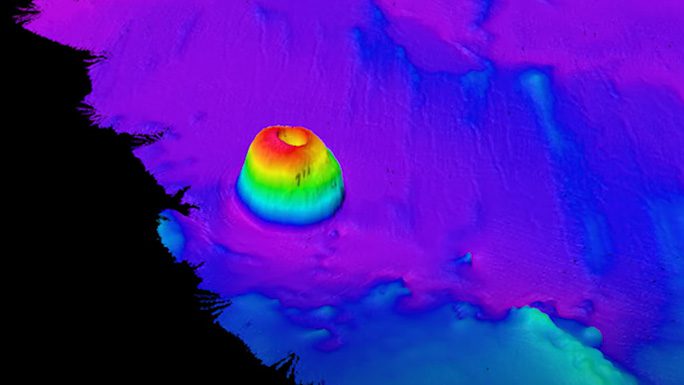The mission of the ocean mapping initiative, Saildrone Surveyor, has uncovered a massive, hot, and peculiar object that bears no resemblance to anything previously seen on Earth.
The object has been described by scientists from the National Oceanic and Atmospheric Administration (NOAA) as resembling a Bundt cake, a large butter sponge cake commonly found in Western cuisine.
Live Science cites a report from NOAA indicating that it is a mysterious rock formation rising nearly 1,000 meters from the surrounding seabed, emerging from the remnants of an extinct volcano.

The strange volcano discovered through images captured by Saildrone Surveyor – (Photo: NOAA).
This formation has been classified as a new underwater volcano, but its bizarre shape is truly astonishing. Unlike typical volcanoes that pierce the ocean surface and create islands like those in Hawaii, this one remains hidden beneath the deep sea, with its summit still 366 meters below the water’s surface.
Aside from its crater, this peculiar volcano bears little resemblance to traditional volcanoes. According to Dr. Aurora Elmore, program director at NOAA’s Ocean Exploration Cooperative Institute, other underwater volcanoes typically have slopes akin to Mount Fuji, but this one features an unusually intriguing and steep gradient.
Saildrone Surveyor, an unmanned vehicle sailing off the coast of the United States, discovered this strange object approximately 322 kilometers from the northern coast of California.
This area lies beyond regions where seamounts are often detected, thus expanding the scope of where underwater volcanoes may exist.
The peculiar cake-like shape may result from intense and rapid volcanic activity or a centuries-old accumulation of marine debris that has shaped the mountain’s profile.
Such underwater volcanoes are critical habitats for marine life, making this discovery promising for providing material for various interdisciplinary studies.


















































